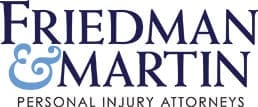It’s the season of warm weather and that always means more outdoor activities: pool parties, picnics, and children’s activities. One activity that continues to cause accidents is bounce houses that are rented for birthday parties and church group outings. Again, in April, five children were injured in Taylors, South Carolina when two inflatables and a bounce house were lifted and carried into the air where they hit power lines near the Springwell Church, the site of the accident. According to Taylors Fire Battalion Chief Ricky Reed, several children fell approximately 30 feet in the air.
Between 2003 and 2013, more than 113,000 people have been injured in inflatable play houses. Most accidents are caused by improper anchoring, high winds and lack of supervision. According to NBC News, a few states, such as New Jersey, make sure operators are trained on all inflatables, while others require operators only to have insurance. Most have no guidelines.
The Consumer Product Safety Commission warns that operators should anchor inflatables to the manufacturer’s requirements and that bigger inflatables, such as slides, should have at least two operators. It also says weight limits should be watched closely.
The Safe Inflatable Operators Training Organization (SIOTO) offers these rental tips:
Before you even commit to an operator you need to ask a few basic questions:
- Are they insured and will they supply a copy of the insurance certificate?
- Are they trained/experienced in inflatable operations?
- What safety measures do they provide YOU with?
After the operator arrives, they should do the following and it is your job to pay attention to help make sure it is done properly.
- A tarp should be placed on the ground to protect the bottom of the unit.
- The unit should be staked down or heavily weighted down with ground weights or sandbags.
- When the unit is inflated make sure there are no rips or holes visible.
- Make sure the unit is fully inflated and not sagging anywhere.
- The operator MUST cover all operating and safety procedures verbally, and should leave printed instructions as well.
After the operator leaves, you should always:
- Attend the unit at all times.
- Keep children age 3 and under OUT of the unit.
- Make sure all children are grouped according to SIZE.
- DO NOT exceed the maximum ride capacity at any time.
- Perform safety checks of the equipment frequently. Operators will show you how.
- Turn the unit off during inclement weather or high winds.
- Seek medical attention for ALL injuries IF they occur.
- Follow ALL posted safety rules at all times.
Remember that safety is everyone’s job. Follow these tips to keep all participants safe.
